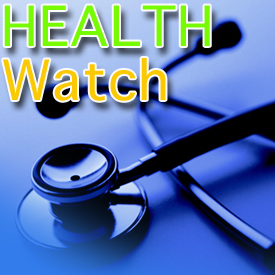

 Four ways to prevent a deadly stroke
Four ways to prevent a deadly strokeFrom the Huffington Post
Stroke is the fifth leading cause of death in the U.S., striking every 40 seconds and claiming a life every four minutes. Contrary to public opinion, strokes are not just an elderly problem, and they certainly are not strictly a male problem. In fact, strokes skew toward women, claiming twice as many lives as breast cancer. One in five women will have a stroke in her lifetime.
A closer look at the stroke demographics uncovers even more disconcerting facts about the disease. Regardless of age or gender, strokes impact African Americans more than any other racial population in the U.S. Why?
Like other diseases that result from factors like high blood pressure, high cholesterol, diabetes, smoking and obesity, African Americans are disproportionately represented in the high-risk category. With stroke, genetics may also be at play. Family history is a major factor, as are diseases like sickle cell anemia, a treatable genetic disorder affecting African Americans that can cause sickle-shaped cells to block blood flow to the brain.
As a result, African Americans are twice as likely to die from a stroke, and their risk of a first stroke is double that of whites. Not surprisingly, strokes in African Americans tend to happen earlier in life, and since stroke is the leading cause of long-term disability, African Americans often must navigate the burdens of living with complications resulting from a stroke.
It doesn’t have to be this way. Eighty percent – or four out of every five strokes – are preventable. Of the 795,000 people who experienced a stroke last year, 636,000 potentially could have avoided it with the right preventive care. For African Americans, this is great news. Stroke prevention is largely in their hands.
Here are four tips to help you avoid a stroke in the future:
- Treat high blood pressure. High blood pressure is the number-one risk factor for stroke. More than 40 percent of African American men and women have high blood pressure, due in part to higher rates of obesity and diabetes, coupled with possible genetic predisposition. Regardless of the cause, treating high blood pressure will reduce your stroke risk by almost half and jumpstart your other stroke prevention efforts.
- Quit smoking. Smoking-related illnesses are the leading cause of death in the African American community. While smoking doubles your stroke risk, quitting dramatically decreases that risk almost immediately. Within 18 months, your stroke risk will be nearly that of a non-smoker. If you smoke, work with your provider to establish a plan to quit, and kick the habit for good.
- Embrace healthy living. African Americans are disproportionately affected by obesity. Among those, ages 20 and older, 63 percent of men and 77 percent of women are overweight or obese, which is linked to an increased risk of high blood pressure, diabetes, heart disease and stroke. Losing as little as five to ten pounds can make a big difference. Follow a low-fat diet rich in fruits and vegetables, and get moving. If you need help finding a healthy restaurant, deciphering a menu, thinking of seasonal exercises or sneaking in a workout while you work, the American Heart Association has you covered.
- Tackle diabetes. People with diabetes are twice as likely to have heart disease or a stroke – and at an earlier age. More than 29 million Americans have diabetes, and African Americans are nearly twice as likely as whites to suffer from the disease. Diabetes is treatable and preventable, however, especially if you identify warning signs early. Treat diabetes now, and if you are one of the 86 million with prediabetes, make the necessary lifestyle changes to ensure you don’t develop diabetes down the road.
Many of us recognize stroke as a leading killer in the U.S., but most don’t understand that strokes are also largely preventable. The same usual suspects contribute to a cycle of unhealthiness – high blood pressure, high cholesterol, diabetes, obesity, smoking and lack of exercise can all contribute to one or many of the conditions that lead to stroke if left untreated. The good news is treating one condition often helps alleviate symptoms of the others.
If you’re struggling with one or several of the stroke risk factors, you are not alone. Make an appointment to see your provider and identify ways you can lower your personal risk before it’s too late. Through better personal health decisions and more proactive health care, we can significantly reduce the incidence of stroke and save millions of lives in the process.
